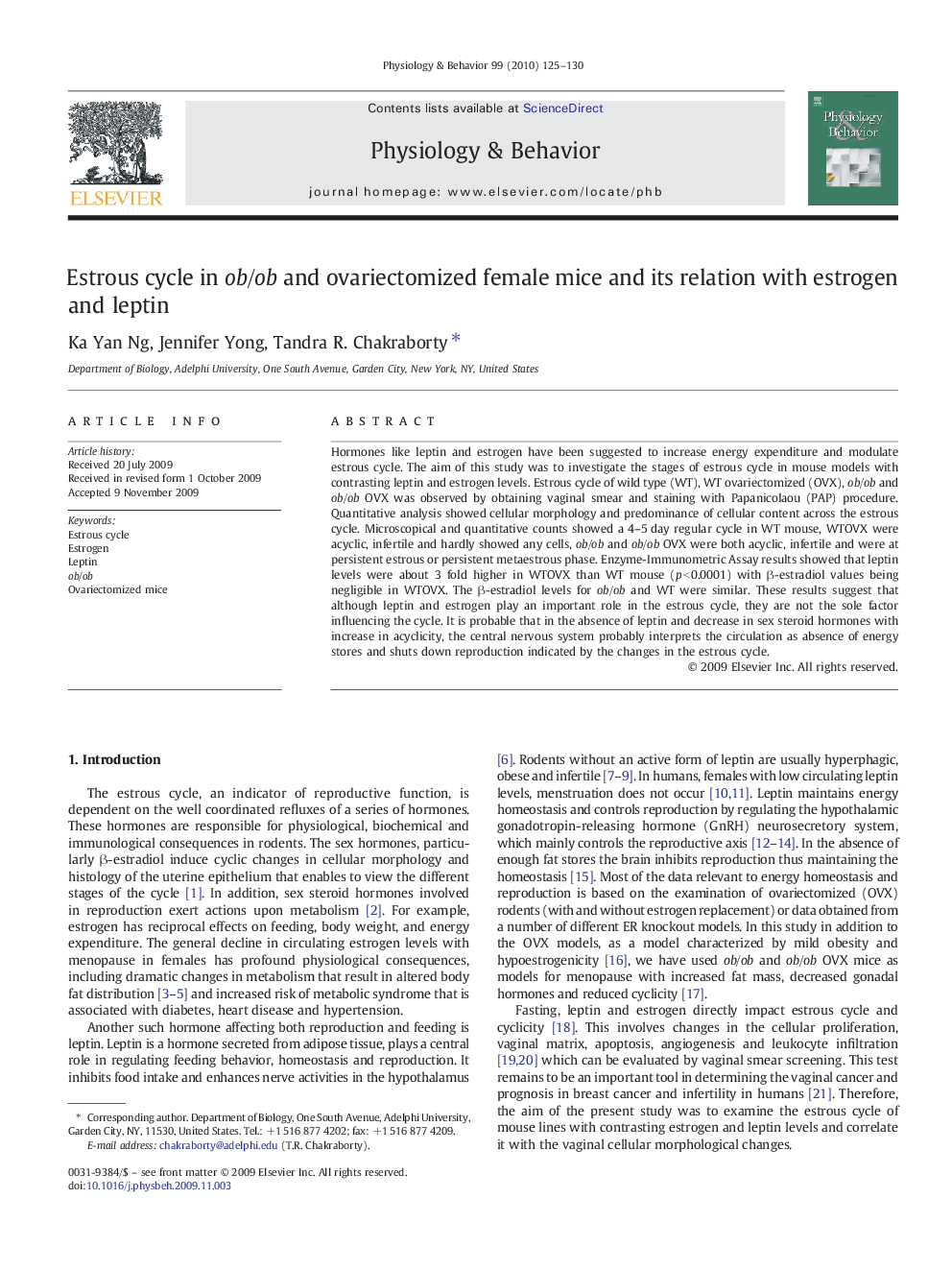| Article ID | Journal | Published Year | Pages | File Type |
|---|---|---|---|---|
| 2845202 | Physiology & Behavior | 2010 | 6 Pages |
Hormones like leptin and estrogen have been suggested to increase energy expenditure and modulate estrous cycle. The aim of this study was to investigate the stages of estrous cycle in mouse models with contrasting leptin and estrogen levels. Estrous cycle of wild type (WT), WT ovariectomized (OVX), ob/ob and ob/ob OVX was observed by obtaining vaginal smear and staining with Papanicolaou (PAP) procedure. Quantitative analysis showed cellular morphology and predominance of cellular content across the estrous cycle. Microscopical and quantitative counts showed a 4–5 day regular cycle in WT mouse, WTOVX were acyclic, infertile and hardly showed any cells, ob/ob and ob/ob OVX were both acyclic, infertile and were at persistent estrous or persistent metaestrous phase. Enzyme-Immunometric Assay results showed that leptin levels were about 3 fold higher in WTOVX than WT mouse (p < 0.0001) with β-estradiol values being negligible in WTOVX. The β-estradiol levels for ob/ob and WT were similar. These results suggest that although leptin and estrogen play an important role in the estrous cycle, they are not the sole factor influencing the cycle. It is probable that in the absence of leptin and decrease in sex steroid hormones with increase in acyclicity, the central nervous system probably interprets the circulation as absence of energy stores and shuts down reproduction indicated by the changes in the estrous cycle.
